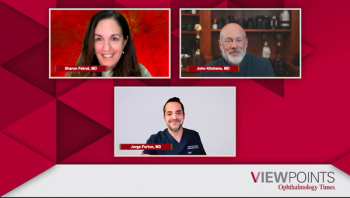
RNA-Seq analysis identifies cell subtypes to use as models for corneal wound healing
At ARVO 2022 in Denver, Colorado, Timothy Blenkinsop, MD, presented “3D Eye Organoids with Distinct Cornea.” His presentation outlined how these organoids have developed sophisticated cornea structures.
At ARVO 2022 in Denver, Colorado, Timothy Blenkinsop, MD, presented “3D Eye Organoids with Distinct Cornea.” His presentation outlined how these organoids have developed sophisticated cornea structures.
Dr. Blenkinsop is an associate professor of ophthalmology, cell development and regenerative biology at the Black Family Stem Cell Institute at the Icahn School of Medicine at Mount Sinai.
This transcript has been lightly edited for clarity.
Hi, my name is Timothy Blenkinsop. I'm an associate professor at the Icahn School of Medicine at Mount Sinai and we're here presenting some of our exciting work on eye organoids.
And so one of the organoids that we developed are these organoids that differentiate into sophisticated cornea structures. We have conducted single cell RNA-Seq analysis and identified a number of different subtypes of cells, which resemble — at least in terms of the gene expression — the cell types of the cornea, and now we're using these for modeling wound healing diseases and testing compounds to see whether we can mitigate those symptoms from wound healing.
One of the objectives of this research is to develop an eye drop that a patient can use or when they're injured, that could hopefully minimize the wound healing response after injury.
The next step is really convincing the field at large that this is an effective model, and then moving into animals to then revalidate our proof of principle in animals.
Newsletter
Don’t miss out—get Ophthalmology Times updates on the latest clinical advancements and expert interviews, straight to your inbox.













































.png)


